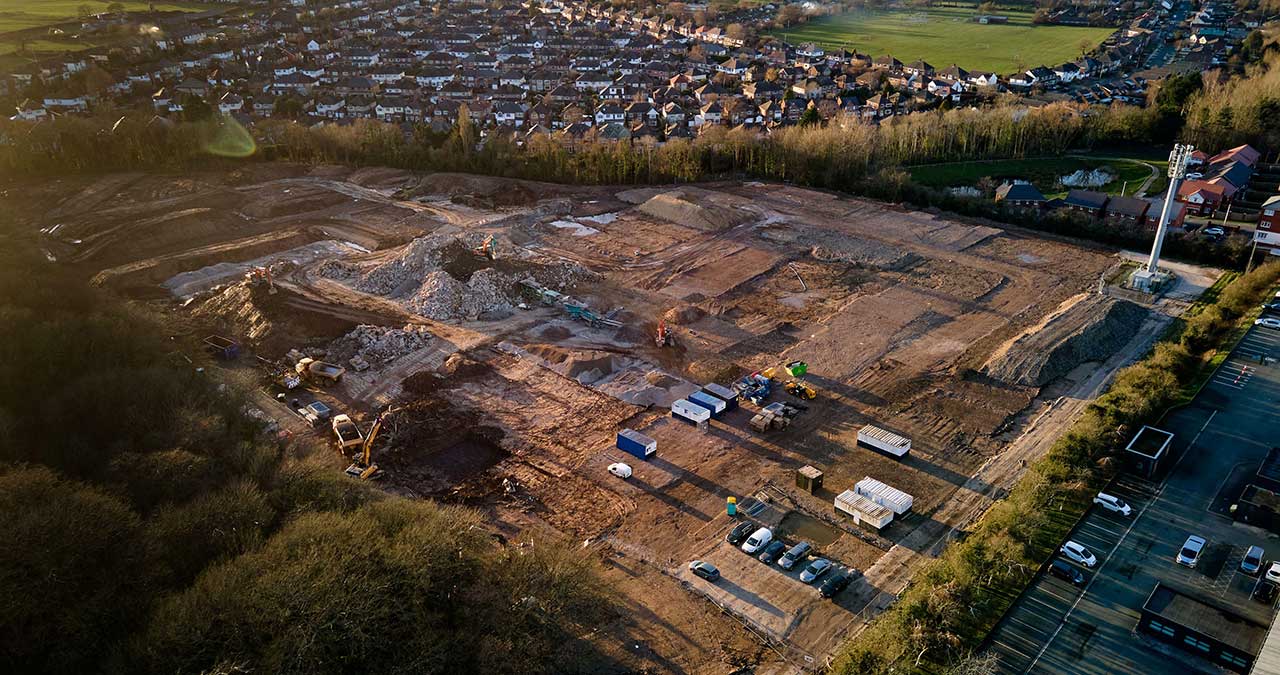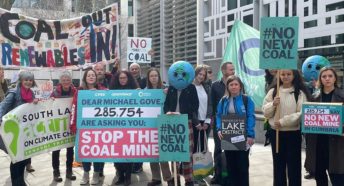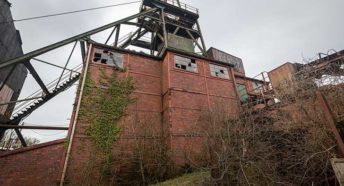There’s a climate emergency, and the planning system is not helping
The climate emergency is the most pressing challenge of our times. With the UK keen to trumpet its climate action credentials, our planning system is sending out very mixed messages.
With the COP26 global climate conference hosted in Glasgow in 2021, you’d expect the host country to be leading on climate crisis-busting plans with flying colours – including by adapting the rules that govern new building here.
But put simply, it’s just not doing enough to drive progress.
Let’s start with the good news. The government has led the world by setting a legally binding target to achieve net-zero carbon by 2050, meaning that our carbon levels work out as zero thanks to cutting emissions and carbon-capture methods.
And the government’s also ramped this up further by committing to get 78% of the way there by 2035, and announced that the UK is on track to achieve this 2035 target.
For the first time, international aviation and shipping emissions will be counted into this budget – something CPRE has been demanding for years, and a really important step forward.
Local authorities want to get to net-zero even faster, which shows great ambition. We love to see it! Over 80% of councils have now officially declared a climate emergency and set local targets for carbon reduction. In most cases, they’re aiming for net-zero by 2030, twenty years ahead of the UK government’s legally binding date.
So far, so good. So how does planning fit in?
The planning system, the name we give to the toolkit of rules that govern what gets built and where, should naturally fit into this progress, right? Erm… Right?
And in theory, that’s the case: the planning system should support the quest for net-zero. The sectors that emit the most carbon are housing, industry and transport – which happen to also be the main forms of development that planning helps to regulate.
And the rules governing planning, the National Planning Policy Framework (NPPF), require planning to ‘shape places in ways that contribute to radical reductions in greenhouse gas emissions’. Local authorities’ development plans are also bound by a legal duty, under the Climate Change Act, to contribute to achieving net-zero.
And there’s more.

The NPPF also contains useful hooks to hang climate-friendly policies onto: for example, poor design should be refused planning permission, and development should be focused where it’s accessible by public transport and offers scope to reduce private car travel.
So surely local authorities are only allowing new building that’s doing lots to tackle the climate emergency… aren’t they?
Local heroes… and the rest
Some local plans (the document created by local authorities and, ideally, residents which lays out the principles for new development in the area) are rising to the climate crisis challenge.
Plymouth & South Devon Councils have already adopted a joint plan which commits to implementing their carbon reduction target. Hurray! And we know that at least Lancaster, Leeds and Bradford are aiming to follow suit – double hurray!
But… that’s where the good news ends. There are plenty of signs that, in practice, the planning system is well behind the curve on climate action.
What’s not working
Here are four things that we know are going wrong:
1. Car and plane-addicted councils
Despite powerful evidence that car use needs to be reduced by between 10% and 60% to achieve net-zero, all across the country, councils are still earmarking land for new housing and commercial development in car-dependent locations, planning for new roads, and pinning their economic ambitions on the continued growth of airports.

A landmark 2020 report by Transport for New Homes found that new ‘garden communities’ were being built that were overwhelmingly car-dependent and the government’s Housing Infrastructure Fund is regularly used to fund roadbuilding projects. This is not a recipe for reducing car use.
2. The homes we need – but make them green
When local plans are examined by government-appointed inspectors, the remit is considered on very narrow criteria – and is purely about housing numbers.
The inspector asks, ‘Will this local plan provide enough development land to meet the council’s housing target?’ If not, the council must go away and find more land.
But there are no such penalties for not having a convincing strategy to reduce carbon emissions. Providing the homes people need and tackling the climate emergency are both important objectives, yet it seems that plans are judged against one and not the other.
3. New rules for planning – but silence on the climate
The much-vaunted planning reform programme, which began in summer 2020, made bold claims about speeding up and simplifying the planning system, but soon became bogged down in controversy about top-down housing numbers (the ‘mutant algorithm’) and the risks to local democracy.
But, as CPRE and many other groups pointed out, there was little mention of climate action in the new proposals – in fact, they didn’t even commit to setting a firm date for new development to be zero-carbon.
Considering that the government had previously cancelled a 2016 zero-carbon date for new housing, this was incredibly disappointing.
4. Roads? Where we’re going, we don’t need roads
The government is also currently reviewing its Nationally Significant Infrastructure Projects (NSIP) regime, which delivers big projects mainly for energy and transport. The review says it wants to halve the time it takes to make decisions on proposals, and cites the need to move towards net-zero carbon super-speedily as a key objective.
But nearly a third of these large projects already approved or awaiting decisions are for major road schemes – such as the Lower Thames Crossing – or for airport expansions, all of which will inevitably cause increases in carbon emissions and work directly against meeting the government’s net-zero target.

There are solutions. Now we need action
Each of these problems has an obvious solution – if the government has the will to act. Local plans should place extra focus on urban brownfield locations for new development (read what brownfield is, and why we care about it so much, here) and stop enabling homes and commercial premises to be built in car-dependent locations.
Plans should be judged on their emissions-reducing credentials as much as on housing supply. Cutting carbon should be a basic criterion for major new projects to be considered, negating new roads or airport expansion and following the moves to this effect already made in Wales. Business as usual is not an option.
And, as Mr Gove looks to make his mark on his role as Minister for Housing, he could explicitly make moving to net-zero carbon one of the key purposes of planning reforms.
Will the government give the planning system a real role and purpose in tackling the climate emergency? It’s high time.






 12 min read
12 min read 




